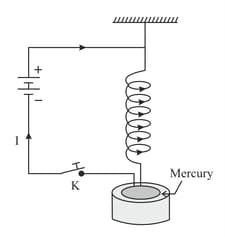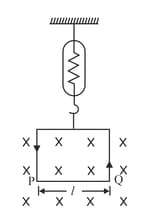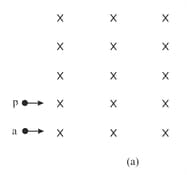Magnetic Field Due to a Long Straight Current Carrying Conductor
Important Questions on Magnetic Field Due to a Long Straight Current Carrying Conductor
Explain carefully why the derivation as in is not valid for magnetic field in a plane normal to a current-carrying straight wire of finite length and passing through the midpoint of the axis.
Draw the magnetic field lines due to a current carrying loop.
How does a current carrying coil behave like a bar magnet?
An electric current is flowing due south along a power line. What is the direction of the magnetic field at a point (a) above it and (b) below it?
Which physical quantity has the unit ? Is it a scalar or a vector quantity?
Suppose a helical spring is suspended from the roof of a room and very small weight is attached to its lower end. What will happen to the spring when a current is passed through it ? Give reason to support your answer.
A loosely wound helix made of stiff wire is mounted vertically with its lower end just touching a dish of mercury, as shown in Figure. When a current from a battery is started in the coil through the mercury, the wire executes oscillatory motion with the lower end jumping out of and into the mercury. Give reason.

Two parallel conducting wires carrying currents in same direction attract each other. Why?
Explain, why two wires carrying currents in opposite directions repel each other.
As shown in Figure, a rectangular loop of width is suspended from the insulated hook of a spring balance. A current flows in the anticlockwise direction in the loop. A magnetic field exists in the lower region. What will be the change in the tension of the spring if the current in the loop is reversed ?

The free electrons in a conductor are always in a state of continuous motion. Even then no magnetic force acts on them in a conductor unless a current is passed through it. Why ?
A proton and an alpha particle enter at right angles into a uniform magnetic field of intensity . Calculate the ratio of the radii of their paths, when they enter the field with the (ii) same kinetic energy.
A proton and an alpha particle enter at right angles into a uniform magnetic field of intensity . Calculate the ratio of the radii of their paths, when they enter the field with the (i) same momentum.
An -particle and a proton moving with the same speed enter the same magnetic field region at right angles to the direction of the field, as shown in Figure (a). Show the trajectories followed by the two particles in the region of the magnetic field. Find the ratio of the radii of the circular paths which the two particles may describe.

A proton and a deuteron having equal momenta enter in a region of uniform magnetic field at right angle to the direction of the field. Depict their trajectories in the field.

